PsychNewsDaily Publishers
100 Summit Drive
Burlington, MA, 01803
Telephone: (320) 349-2484
PsychNewsDaily Publishers
100 Summit Drive
Burlington, MA, 01803
Telephone: (320) 349-2484
Playing with your cat enhances their happiness, physical health, and mental stimulation. Engaging games like puzzle feeders and interactive toys promote exercise and strengthen your bond.

Playing with your cat does way more than just pass the time—it keeps them active, sharp, and honestly, way happier. The right games give your cat exercise, mental stimulation, and help you both bond. With just a little effort, you can turn ordinary moments into activities your cat will actually look forward to.
Maybe you already use toys or do simple play sessions, but have you tried mixing it up? There are so many creative games out there you might’ve missed. Puzzles that challenge their brain, or playful chases that let them act out their wild side, can really shake up your routine.

Neko Sliding: Cat Puzzle lets you slide cat-shaped blocks around a grid to form lines. When you clear a line, you get points and make room for more moves. The rules are simple, but you still need to think ahead.
You can play on your phone, tablet, or computer—no downloads, no fuss. That makes it easy to jump in for a quick break or get lost in it for a while.
As you slide the cats, you’ll quickly realize planning matters. Sometimes a single move sets up a whole chain reaction, and that’s pretty satisfying.
The game feels lighthearted, with cute cat designs that make it more fun. There’s no timer, so you can play as slow or fast as you want. That keeps things chill but still gives you a puzzle to solve.
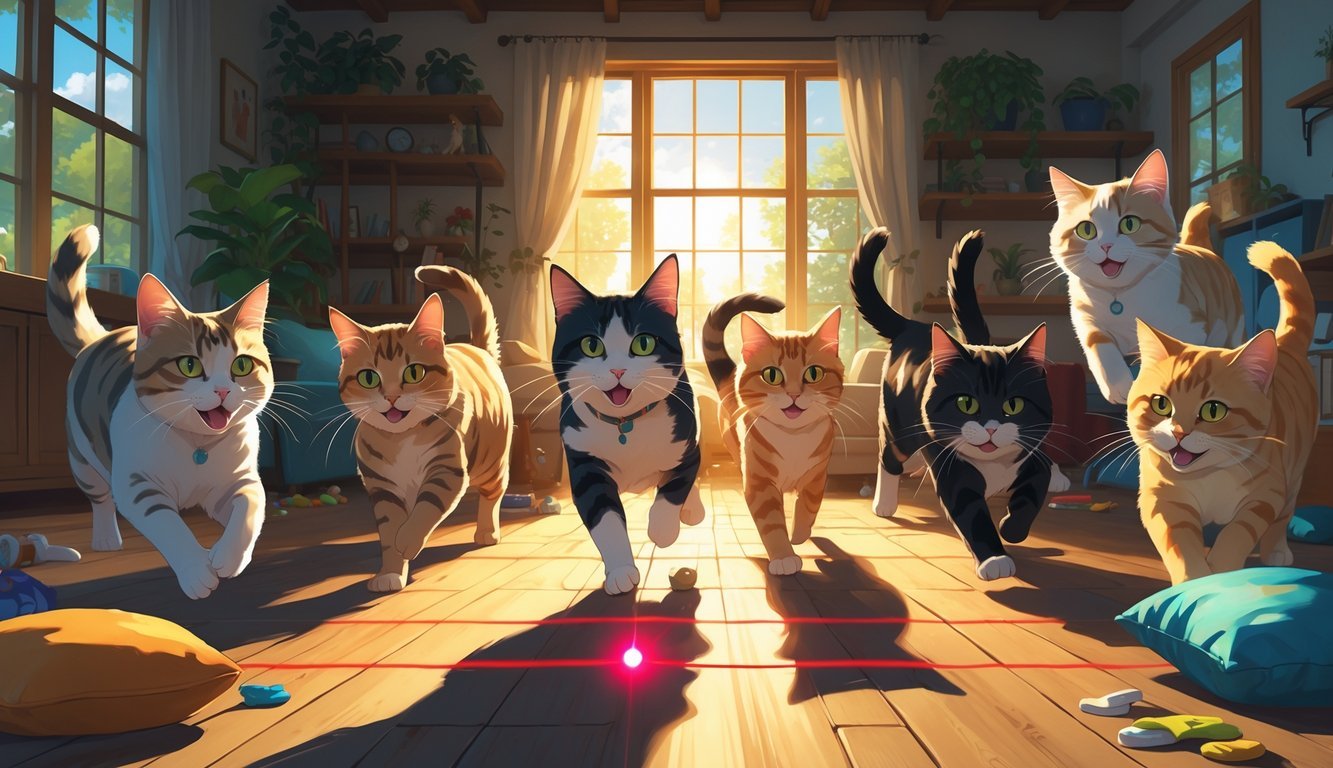
A basic laser pointer can keep your cat active and totally entertained. The moving light triggers their hunting instincts, so they’ll chase and pounce like crazy.
This game gives your cat a chance to stretch, run, and sharpen their reflexes. You don’t need much space or gear, which is a plus.
Always use a pet-safe laser pointer. Never shine it in your cat’s eyes—it’s just not worth the risk.
At the end, let your cat “catch” a real toy, like a little ball or plush mouse. That way, they finish the game feeling satisfied instead of frustrated.
Even short laser sessions help. Just a few minutes a day can make a real difference for your cat’s body and mind.
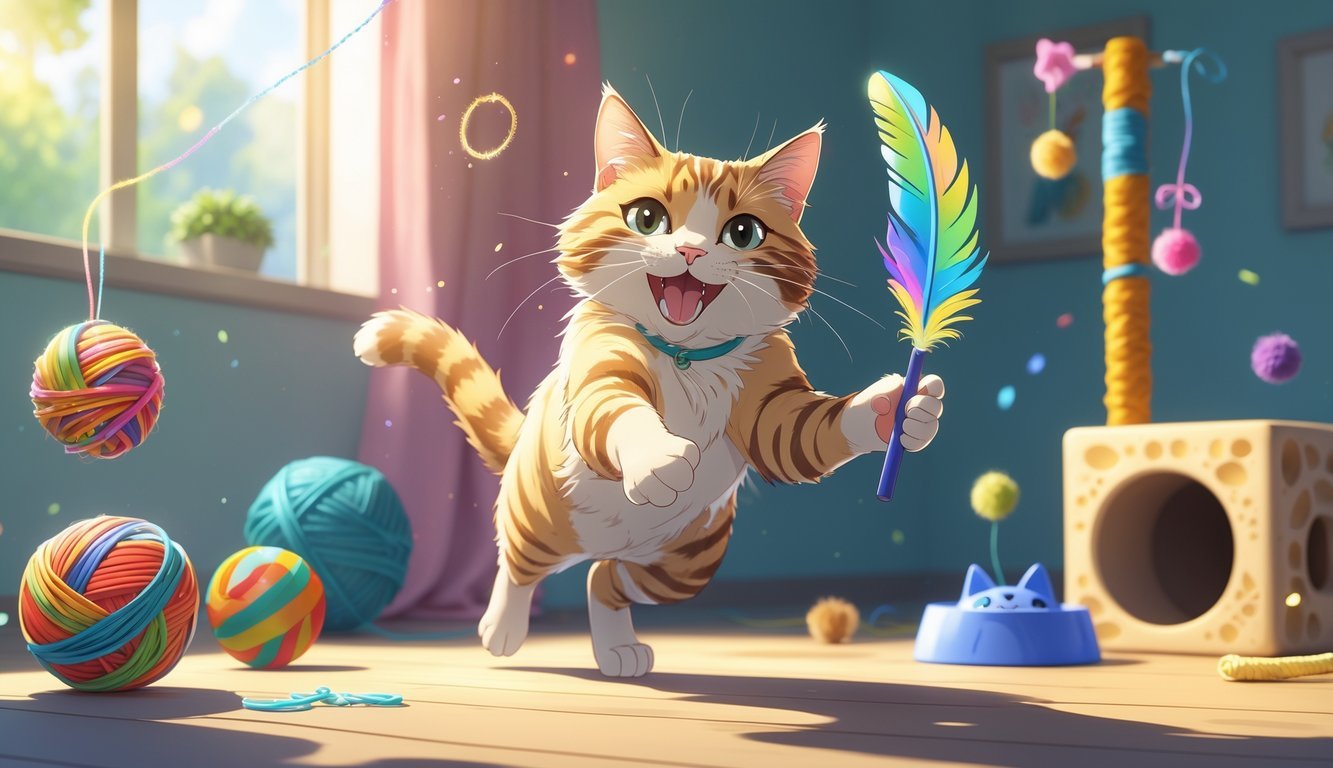
A feather wand is a classic for a reason. You get to control the action, and your cat gets the thrill of the hunt—chasing, pouncing, and swatting.
Regular wand play keeps your cat moving and thinking. If your cat stays indoors most of the time, this is a great way to keep them fit and happy. Just a few minutes a day can boost their mood.
The best part? You get some quality bonding time. Moving the wand around means you’re interacting directly, and that connection matters.
Change up your moves to keep things interesting. Try quick flicks, slow drags, or let the feather dangle just out of reach. Variety keeps your cat coming back for more.
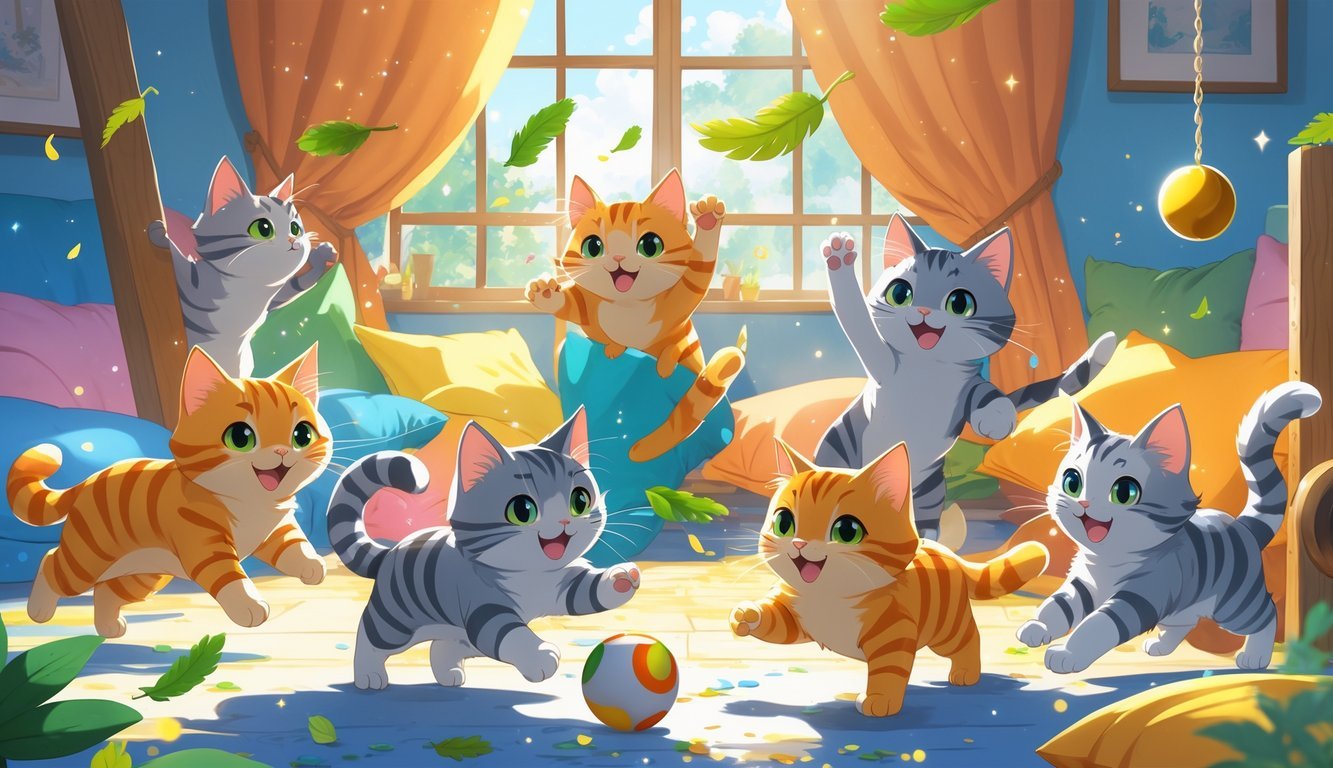
This game mixes your cat’s love for hiding with their curiosity about scents. All you need is a little catnip and a few safe hiding spots.
Sprinkle a bit of catnip in corners or under light things like a paper bag or box. Your cat will sniff around and hunt for the scent.
You can also hide a favorite toy with a touch of catnip. That way, your cat gets both the smell and a fun surprise.
Switch up hiding spots often so your cat stays interested. Make sure the areas are safe—no tight spaces or wobbly objects.
This activity gives your cat both mental and physical stimulation. It’s simple for you, but feels like an adventure for them.
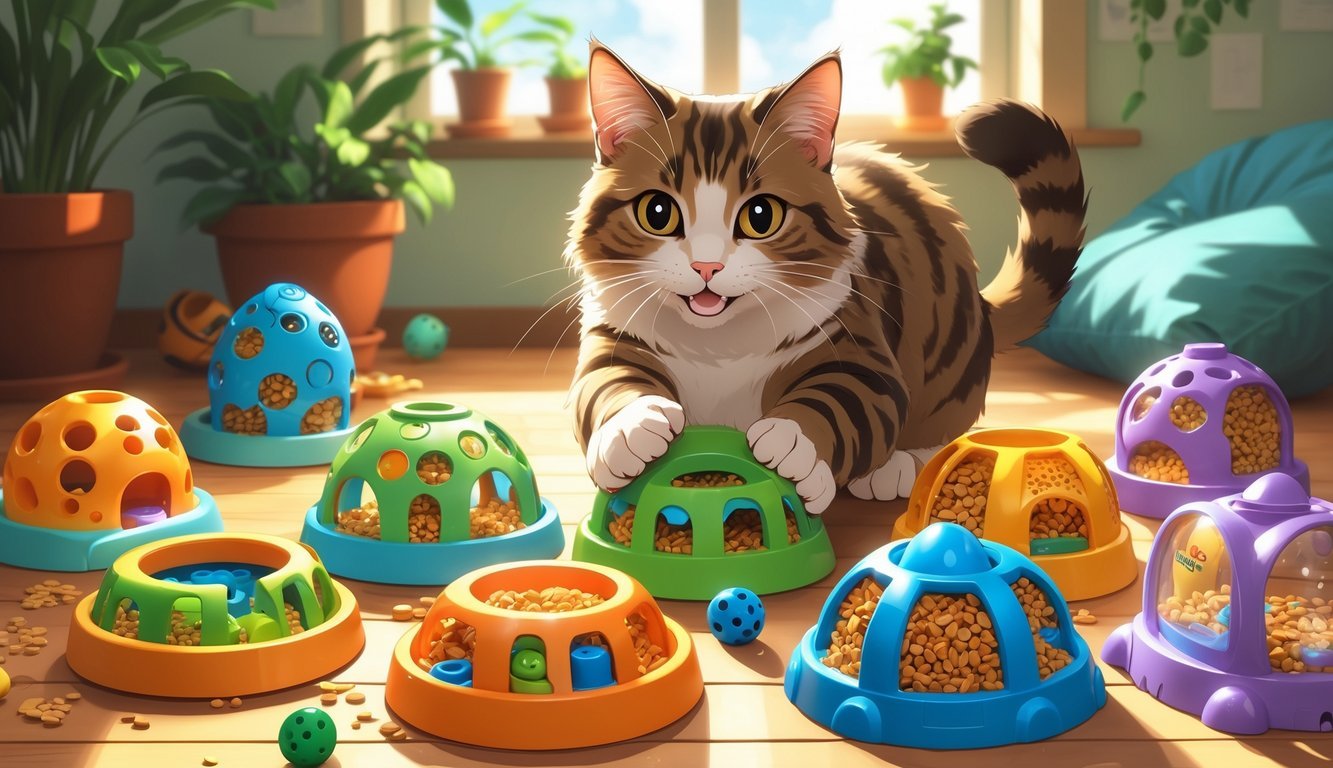
Puzzle feeders make mealtime a game. Instead of just eating from a bowl, your cat has to figure out how to get the food. That keeps their brain busy and slows down fast eaters.
You can find feeders in all shapes and levels, from trays with grooves to toys they have to push or roll. Start simple if your cat’s new to it, then try harder ones later.
Puzzle feeders get your cat moving, too. They’ll paw, nudge, and sometimes pounce while working for their food. It’s great for indoor cats who don’t get as much exercise.
Pick a feeder that matches your cat’s skill and personality. Some cats dive right in, others need a little encouragement.
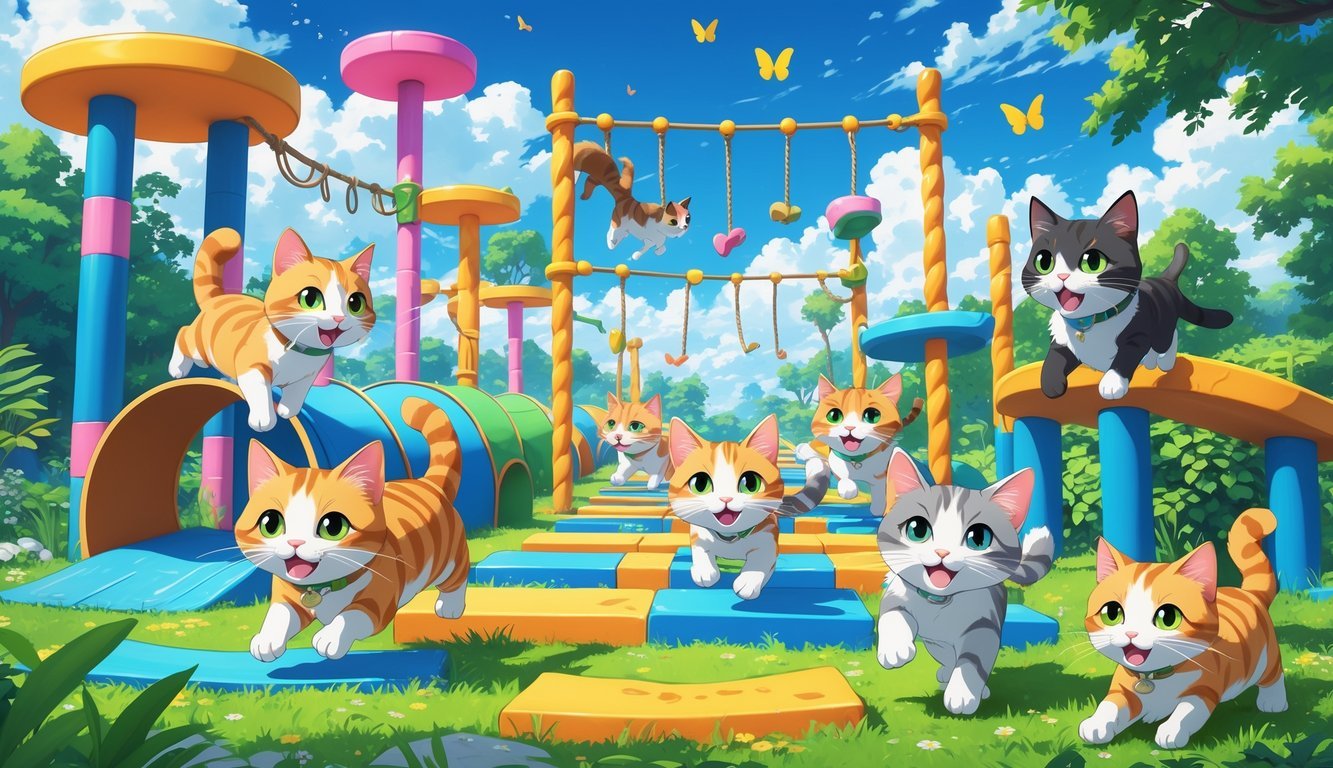
An obstacle course is a fun way for your cat to move, climb, and explore. You don’t need fancy stuff—just use boxes, chairs, tunnels, or cushions to make simple challenges.
Guide your cat through the course using toys or treats. That keeps them focused and helps them learn the path.
Change things up now and then. Swap objects, rearrange the layout, or add new things to climb. Even little changes make the course feel new.
Obstacle courses help your cat stay active indoors. They get exercise, mental challenges, and a safe way to use their natural skills.
Check that everything’s sturdy and nothing can trap your cat. Soft landings and stable props make the whole thing safer and more fun.
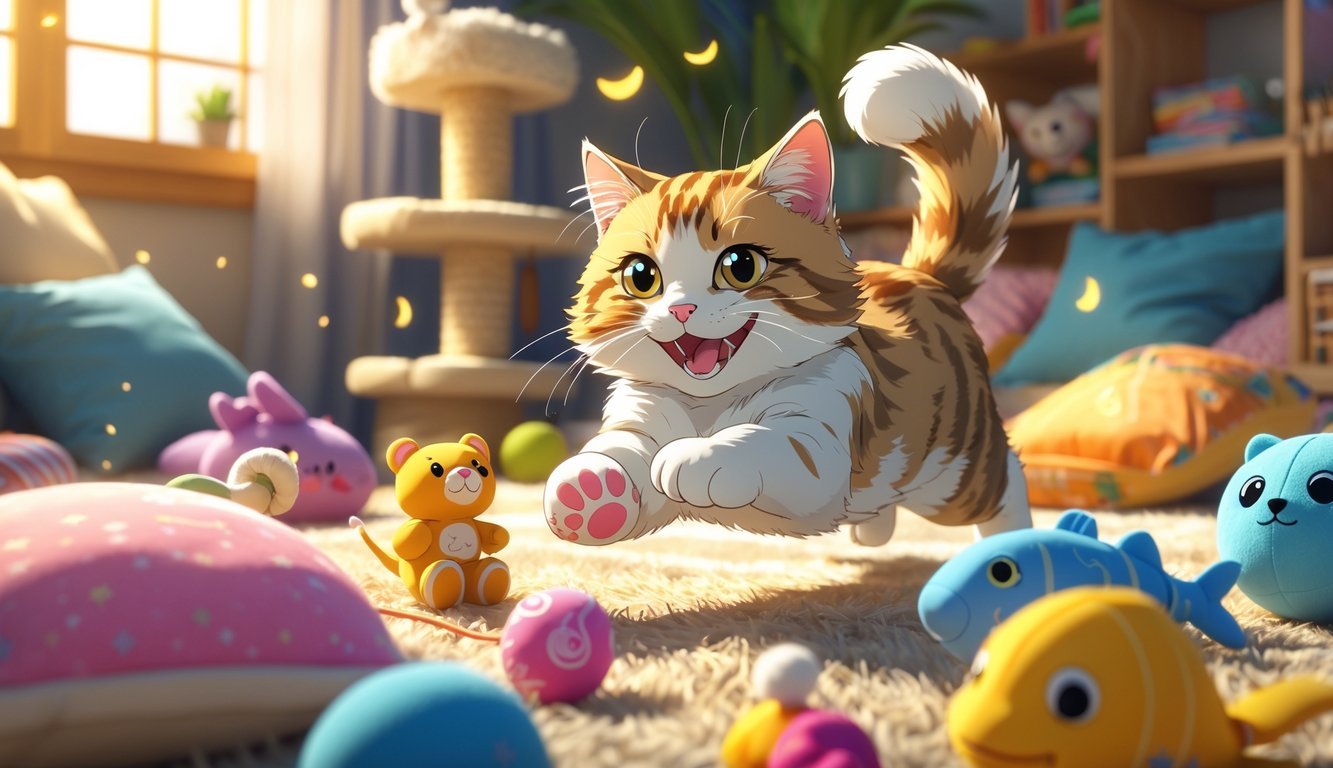
Fetch isn’t just for dogs—lots of cats love it, too. With the right toy and a bit of patience, you can teach your cat to bring things back.
Start with a small, soft toy your cat already likes. Toss it a short distance and encourage your cat to grab it. Give gentle praise or a treat when they show interest.
If your cat picks up the toy, call them back in a friendly voice. Some cats naturally bring it over; others might take a little longer to get the hang of it.
Soft toys are best since they’re easy to carry and safe to throw indoors. Skip anything heavy or with tiny parts that could break off.
This game gives your cat exercise and a mental boost. Plus, it’s just a fun way to hang out together.
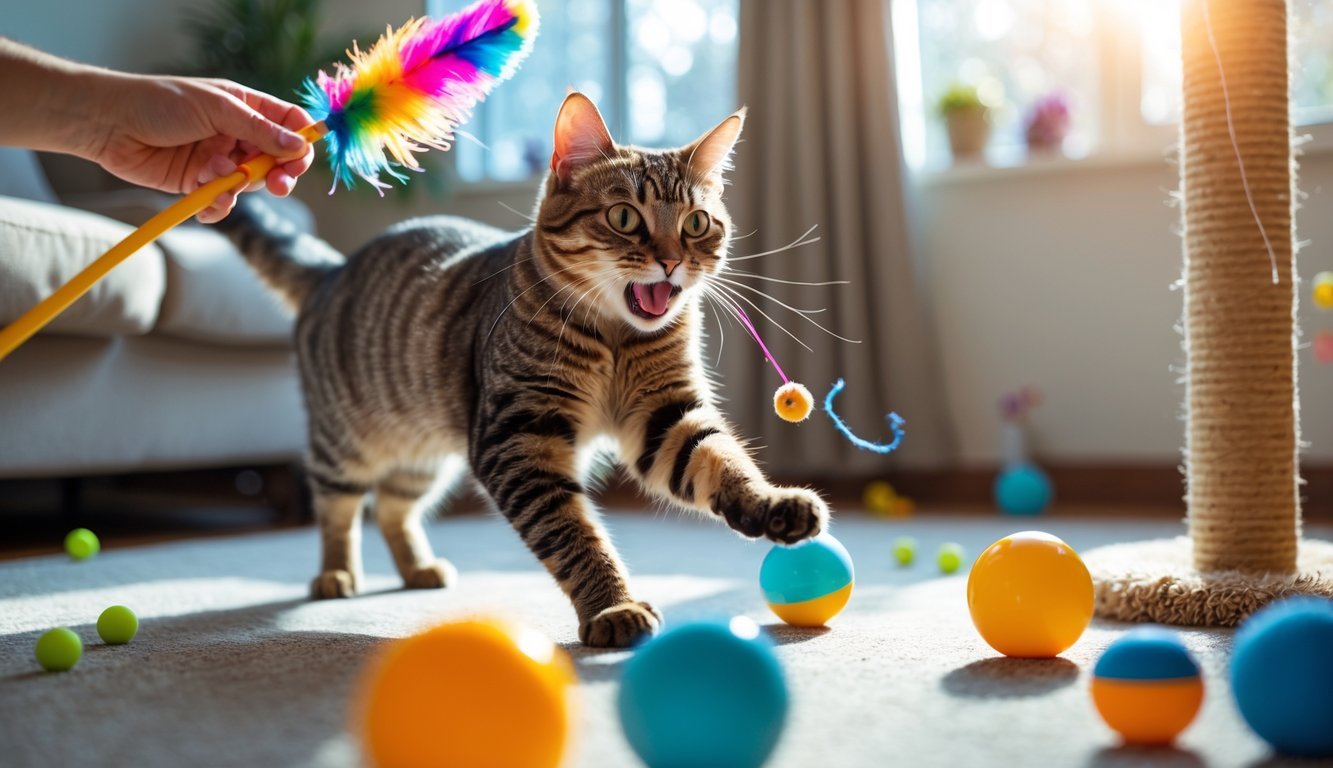
Interactive play keeps your cat moving, burns off energy, and helps prevent bad habits. It also keeps their mind sharp by giving them challenges that feel a bit like hunting.
Cats need daily movement to stay at a healthy weight and keep their bodies strong. Short, active play sessions can help lower the risk of obesity, which is linked to joint problems, diabetes, and heart issues.
Play helps build muscle tone and flexibility. When your cat leaps or chases toys, they stretch and strengthen muscles in ways lounging just can’t match.
Even a few minutes of play can boost circulation and keep joints from getting stiff. Senior cats might move slower, but gentle games still help them stay mobile.
Physical benefits of play:
Cats are natural hunters, and without challenges, they get bored or frustrated. Interactive play lets them stalk, chase, and pounce in a safe way.
This mental workout lowers stress and can cut down on unwanted behaviors, like scratching furniture or nonstop meowing. Bored cats will find their own “entertainment,” and it’s rarely what you’d choose.
Puzzle toys, wand games, or treat-dispensing activities keep your cat thinking. These games also help shy cats build confidence and feel more comfortable.
How play enriches your cat’s mind:
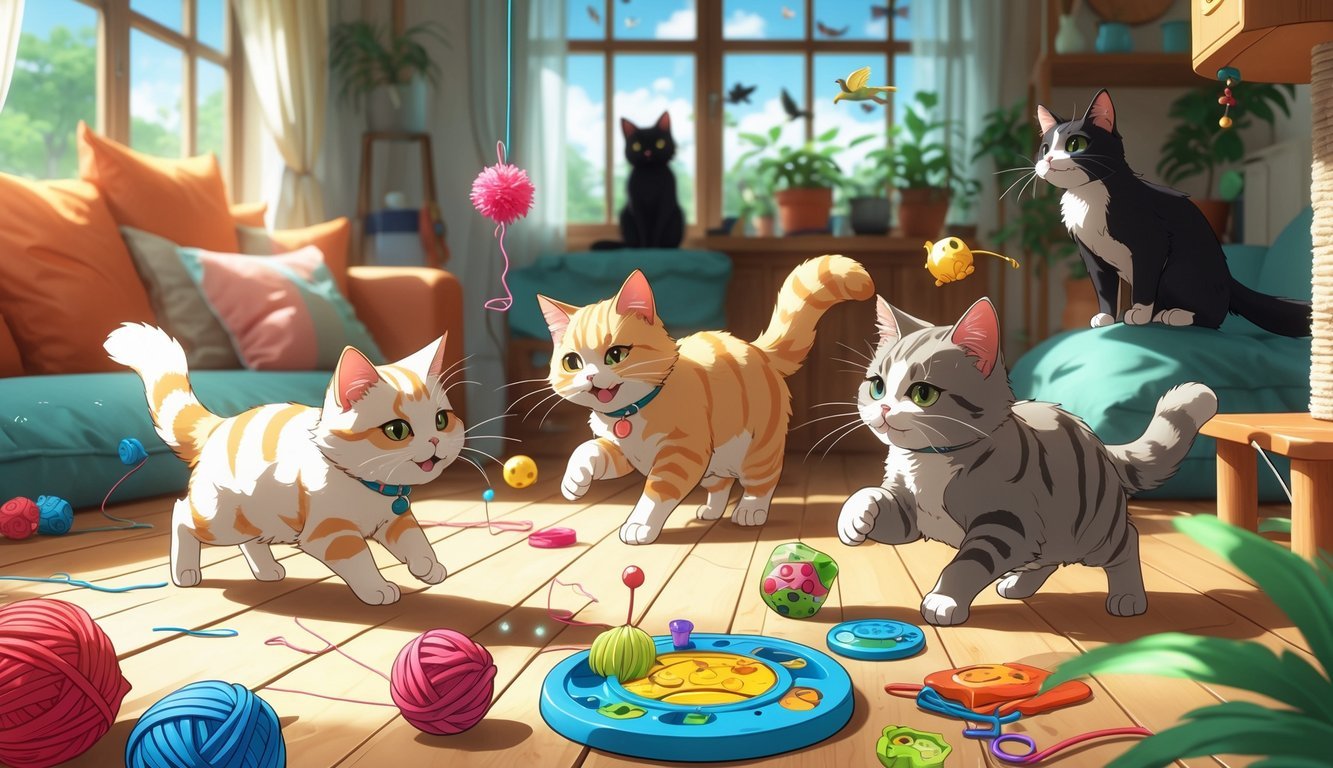
Your cat will get more out of playtime if you match activities to their instincts and keep some kind of routine. The right toys and a little consistency help keep your cat curious and less likely to get bored.
Not every toy will catch your cat’s eye. Some love chasing fast things, others like batting smaller stuff. Watch what gets your cat excited—feathers, bells, crinkly textures, whatever it is.
Rotate toys now and then so they don’t lose interest. You don’t need tons, but swapping between a wand, a ball, and a puzzle feeder makes a difference.
Interactive toys work best since they mimic hunting. For example:
Skip toys with small parts that could break off and become choking hazards. Always keep an eye out when your cat plays with string, ribbon, or anything that could get tangled.
Cats really do better when life feels predictable. If you carve out playtime at the same times each day, your cat will start to expect it and stay more engaged.
Try short sessions—maybe 10 to 15 minutes—two or three times a day. That definitely works better than one long stretch.
Play right before meals. That way, you mimic their natural hunt-eat-rest rhythm. It also helps burn off some energy and might cut down on those midnight zoomies.
Keep things structured, but don’t be afraid to mix it up. If your cat seems bored, just grab a different toy or change the speed.
Always wrap up on a good note. Let your cat “catch” the toy so they feel like a winner after the game.